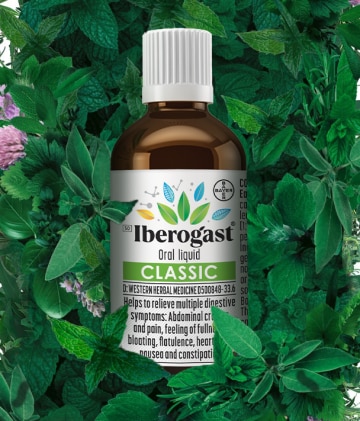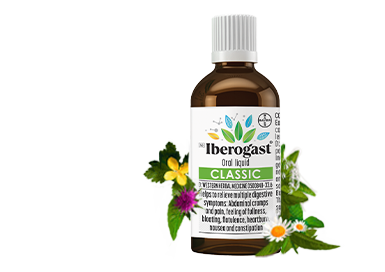Peppermint leaves (Menthae piperitae folium) – aromatic and medicinal
Peppermint is by no means a new discovery when it comes to medicinal plants. It was used already in the time of the ancient Egyptians: the remnants of peppermint leaves have been found in their graves. They are used in many areas of medicine - but especially in the treatment of gastrointestinal complaints, like soothing an upset stomach and aiding digestion. Peppermint leaves do not only possess painkilling and antispasmodic properties, they also relieve symptoms such as flatulence and have an anti-inflammatory and anti-ulcerogenic effect.
Origin and further uses of peppermint
An Ancient Greek legend tells of a water nymph by the name Minthe, living by the underworld river Kokitos, who seduced the god Hades and boasted of her superiority over Persephone. In retaliation, the queen of the Underworld transformed her into the plant we now know as mint. The old Greek name hedyosmon (sweet smelling) is nowadays only used for certain varieties and has been almost universally replaced.
The peppermint is not a species onto itself, but a cross hybrid between watermint and spearmint, with a high concentration of the organic compounds menthol and menthone.
These highly aromatic compounds allow peppermint to be one of the most well know flavouring agents around – it is used for chewing gum, toothpaste and teas. Its soothing effects allowed it to gain notoriety as a remedy for mild headaches, skin irritations, menstrual complaints as well as digestive symptoms.
Peppermint can grow almost anywhere, but prefers moist soil, in shady surroundings. And even though you can cultivate it on your own, in a pot at home, controlling and extracting its active ingredients for achieving its medicinal benefits is not the same as preparing a tea or infusing oil. As such, it is advisable to reach for suitably prepared medicines with herbal ingredients.
If you reach out for a medicine with combined herbal ingredients, it is possible to even treat, multiple gastrointestinal symptoms simultaneously. One such highly effective medicine is Iberogast®, with its nine herbal extracts, formulated specifically to target different digestive symptoms of functional gastrointestinal disorders like irritable stomach or irritable bowel and their underlying causes at the same time.
The effect of peppermint leaves on the gastrointestinal tract
Extracts from peppermint leaves are mainly used for minor spasms of the gastrointestinal tract, flatulence and abdominal pain. They can be anti-inflammatory, counteract free radicals in the stomach and regulate acid production and also promote the production of bile. In addition, peppermint is a cure for diseases of the upper respiratory tract, like coughs.
Because of their multifaceted effect, extracts from peppermint leaves also relieve the symptoms of irritable bowel syndrome.
At a glance: This is how peppermint works in Iberogast®
The following table shows the different active contributions of peppermint in Iberogast®:
| Active benefits of peppermint leaves in the frame of irritable stomach | |
| Activation of the musculature in the lower stomach | |
| Relaxation of the musculature in the upper stomach | |
| Anti-inflammatory | |
| Regulation of acid production | |
| Protection of the mucosa |
Legend:
| Light Impact | Medium Impact |
High Impact |

Interesting facts about peppermint leaves
Did you know that:
- The particularly curative, famous peppermint in the 17th Century in England was created by crossing different cultivated mint varieties?
- The peppermint as we use it does not appear in the wild?
- The different types of mint differ mainly in the concentration and composition of their precious essential oils?
- The peppermint plant can reached a height of 30 to 70 centimetres and is recognizable by its strong, aromatic smell?
- It flowers purple between June and August?
- The peppermint must be transplanted every three years, to prevent it from becoming a fragrant, drug-poor mint variety?
Get an overview of the medicinal herbs contained in Iberogast®!







